Diablo II
Hack 'n' slash RPG reviewed
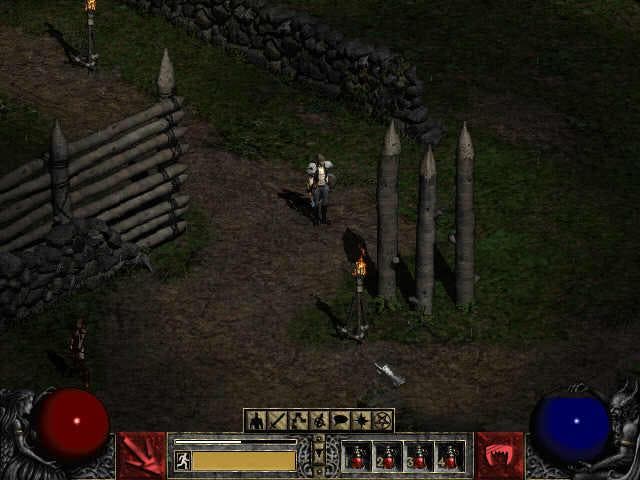
Thanks A Million
Blizzard, creator of such classics as Warcraft and Starcraft, are amongst the most popular of developers with a dedicated fan base. So when Diablo II, the long-awaited sequel to their 1997 smash hit RPG, was finally released earlier this month, it sold over a million copies in two weeks, making it the fastest selling game of all time on the PC...
The storyline for the game is interesting and diverse, unravelled through much adventuring and talking to NPCs. In order to restore good to the land, and to end the threat of Diablo once and for all, you must journey through four acts, featuring a series of dungeons and battlefields for your chosen character (Sorceress, Necromancer, Paladin, Amazon or Warrior) to explore.
The graphical performance is impressive, and even on my fairly modest system the framerate didn't falter except during the most hectic of encounters. Even with the hero's shadows being cast in all directions by the dynamic light sources, there was barely a hiccup.
Diablo 2 retains the old isometric display system of the original, but the overall look is much smarter and infinitely more detailed. Enemies writhe as they fall to the ground, while the sounds created by assorted nasties lurking in the dungeon alerts you to their presence, their spine-chilling groans allowing you to make good your escape or close in for the kill.
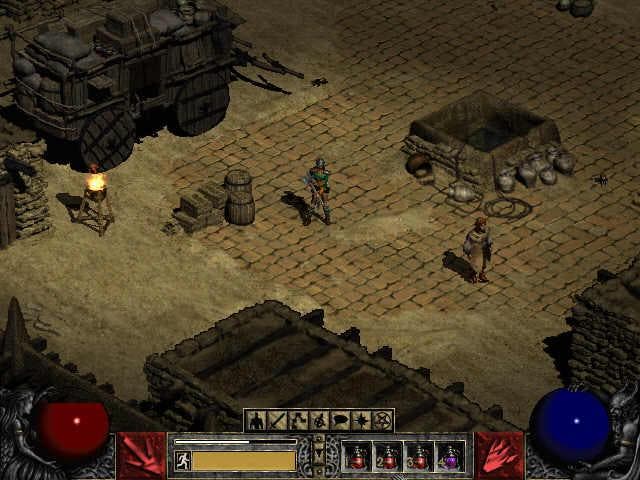
Spice Of Life
The variety of enemies is also appreciated, and it's easy to spot distinctive foes amongst the swarms. When you target them, information on their special abilities appears at the top of the screen, which helps you to pick out the main threats. With the clarity of the NPCs, it all makes it rather easy to focus on the main troublemakers of a dungeon.
And unlike the perpetually dark setting of Tristam, in this game the settings are diverse and interesting throughout the four acts. For example, the second village is set in a dry desert, and has the feel of an ancient Ottoman Empire outpost .. except that its sewers are crawling with the undead.
The map system included in the game is updated on the fly, and a transparent layover makes exploring easy. All the major landmarks and NPCs are marked on the map as you see them, so there is little chance of becoming disorientated. Of course, some may argue that this presents little real challenge, and that it cements Diablo 2's role as an "RPG-Lite", but there is enough challenge in exploration and surviving as it is.
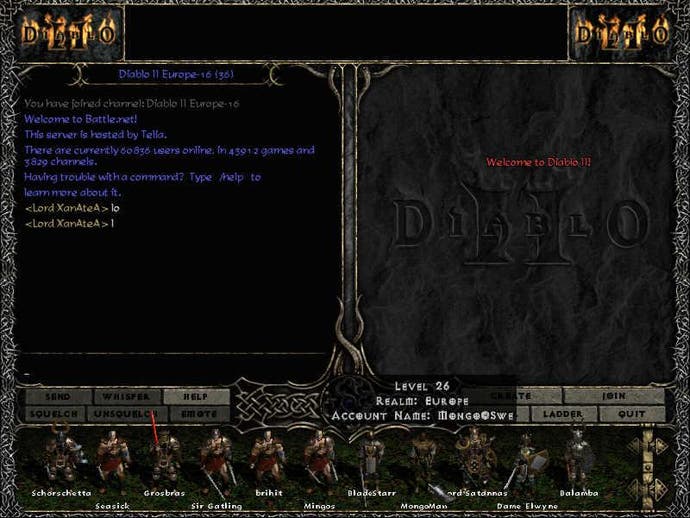
Going Online
One of the features that helped to make the original Diablo so popular was the multiplayer support, although this is also where it becomes clear that the game is not a hardcore RPG. Often I have joined servers to find people talking totally out of character, or not speaking at all and just cutting down reams of enemies in a race to become the highest level player on the server.
Sometimes you can find a few others interested in roleplaying, but most of the time it's more like Quake than Everquest. Of course, depending on your taste this might not be a bad thing. And when you are fighting, you won't have much time for idle chitchat - the game's real-time combat is especially hard on the melee fighters, with dozens of enemies converging on you at once.
It's imperative to carry several healing potions with you, and even more important are Scrolls of Town Portal. These can teleport you to the nearest town, and the portal stays there so that you can immediately gate back when you are finished healing, or selling the treasures which you have picked up on your travels. This keeps downtime to a minimum, and has already won over several Everquest fans who got bored with the constant sitting-and-resting and going-to-bank routine of other online RPGs.
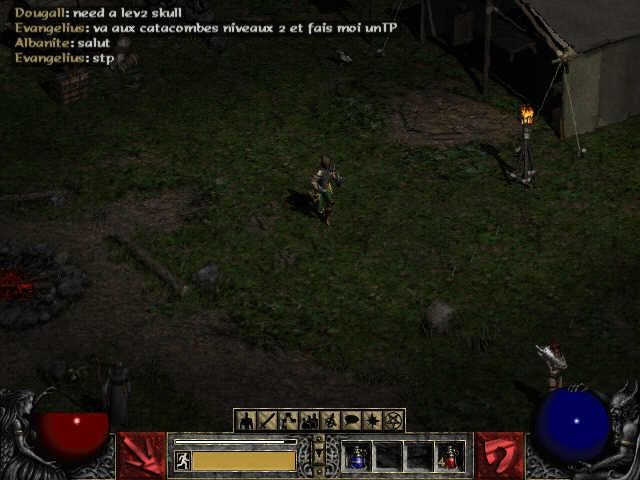
Cart Boot Sale
Some of the treasures you collect contain magical properties, and must be identified to show their true properties. Even when you have found out what your new staff does, you may not be able to use it - certain items have a class or stats limitation.
For example, a warrior with a high strength will be able to wield a giant two-handed axe, while a weakling sorceress won't. Conversely, a necromancer can wield a magical wand, while it would break in the warrior's hands. As a result, trading magic items with other players is one of the main online features.
At the end of the day though, I don't think I will still be playing Diablo II a year or two down the line. It simply doesn't have the complexity of Ultima Online, Asheron's Call or EverQuest, and is missing the little touches that give an RPG its long term power.
But this doesn't take away from the sheer fun which can be had with the game. The graphics are a treat, the sound suitably atmospheric, and the soundtrack perfectly matches the scene. If I ever want to just blast some skeletons and take out my aggressions online without worrying about inventory loss or lag, this is the game to fire up.
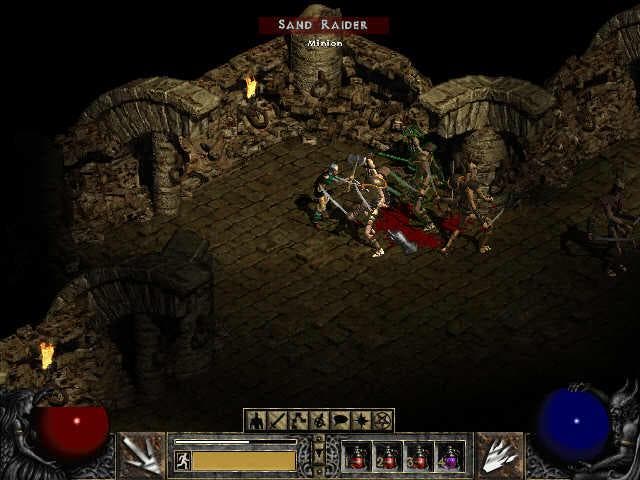
Conclusion
Diablo II is really a meld of an action game and an RPG. The wealth of NPCs, settings and items make it comparable to a role-playing game, but the hack-n-slash combat system owes more to Gauntlet than Ultima.
Although I haven't always liked cross-genre games, Diablo II carries off its role as an action RPG very well. The wealth of online servers, the randomly generated dungeons, the difficulty of missions, not to mention the three difficulty modes which change the way you have to fight to survive, all add some staying power to the game.
If you are looking for serious role-playing I suggest you look elsewhere, especially if you plan on taking the game online. But as an "RPG-Lite" it's a damn fine game - go pick it up!
